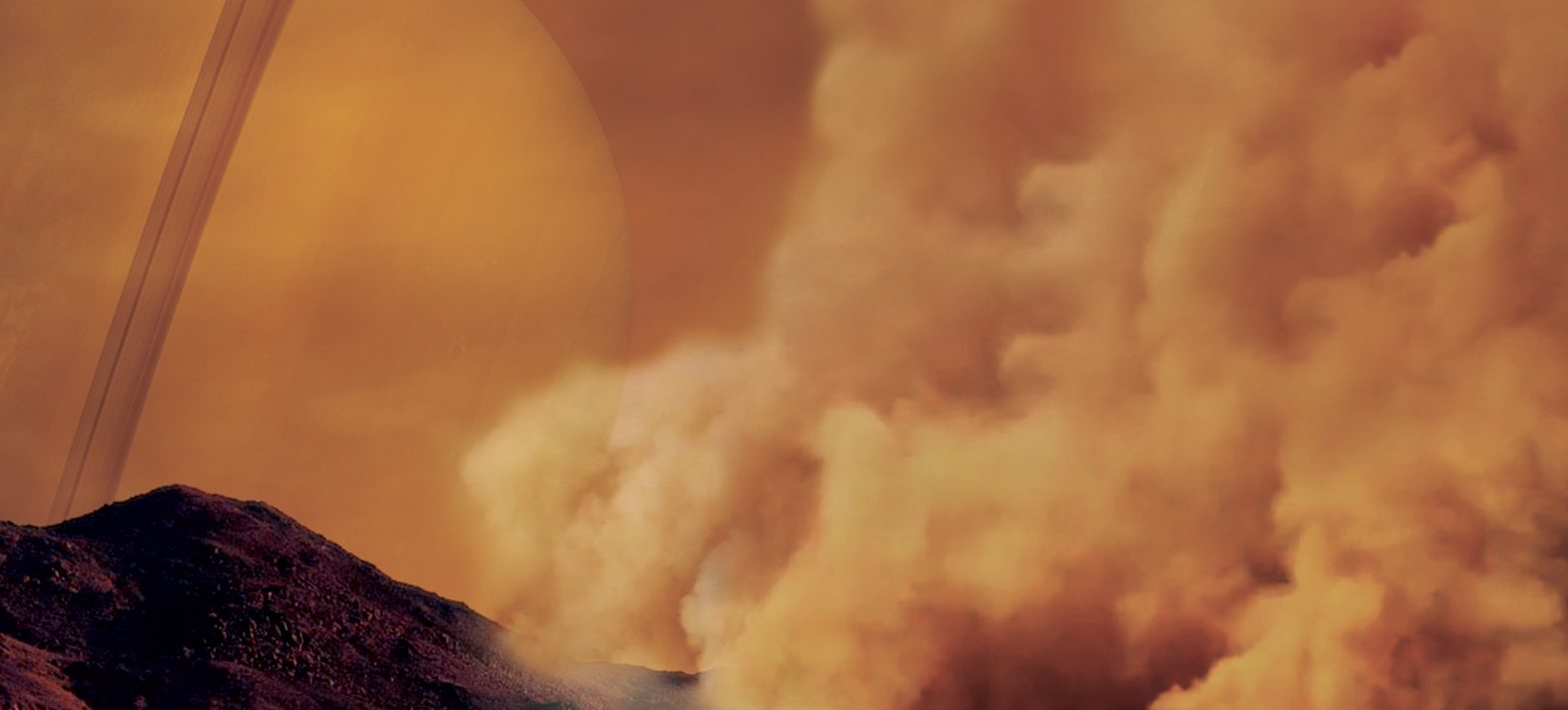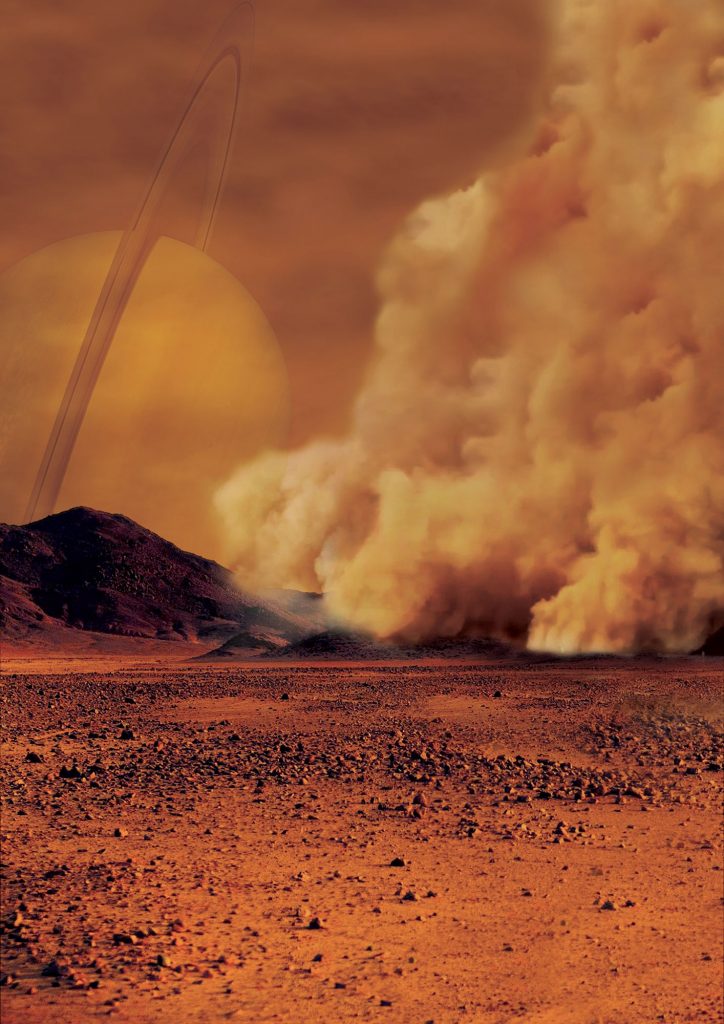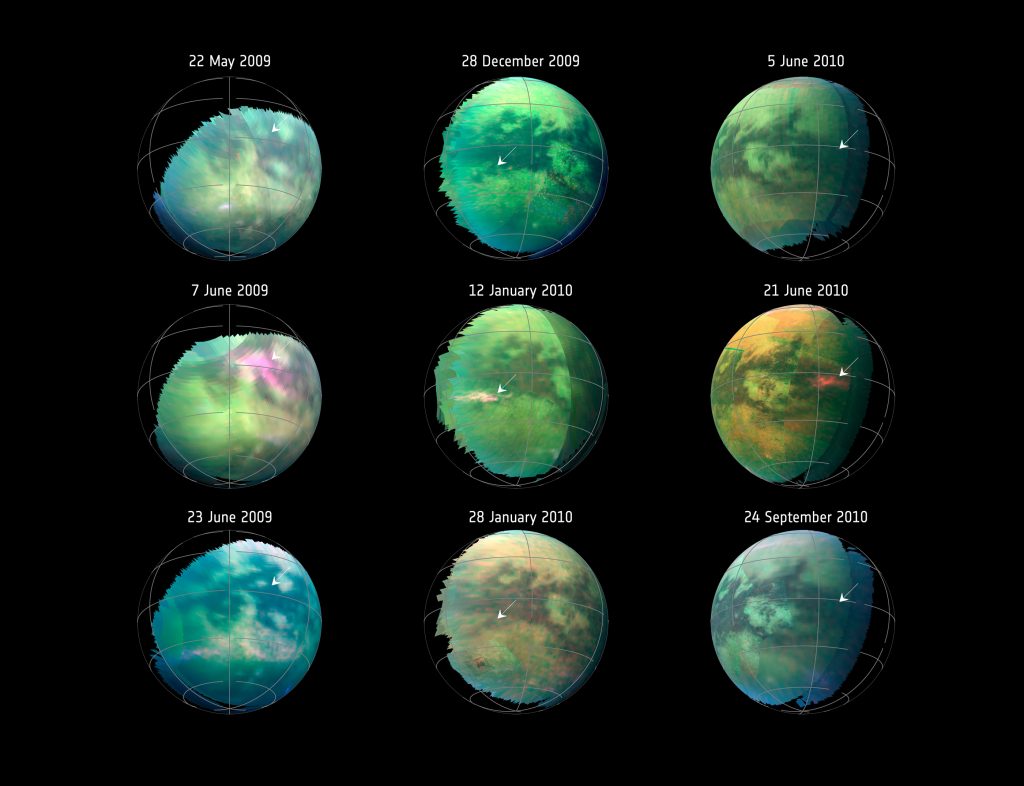Cassini detects dust storms on Titan for the first time
Data from the international Cassini-Huygens mission, which explored Saturn and its moons between 2004 and 2017, have revealed what appear to be dust storms in Titan's equatorial regions. The discovery, described in a paper published today in Nature Geoscience, makes Titan only the third body in the solar system where dust storms have been observed, after Earth and Mars.

Publication date: 25/09/2018
Press, Research
Related teams :
Planetology and Space Sciences
Related themes : Origins









